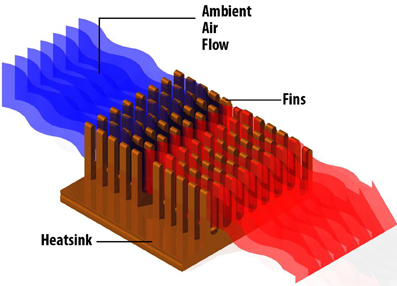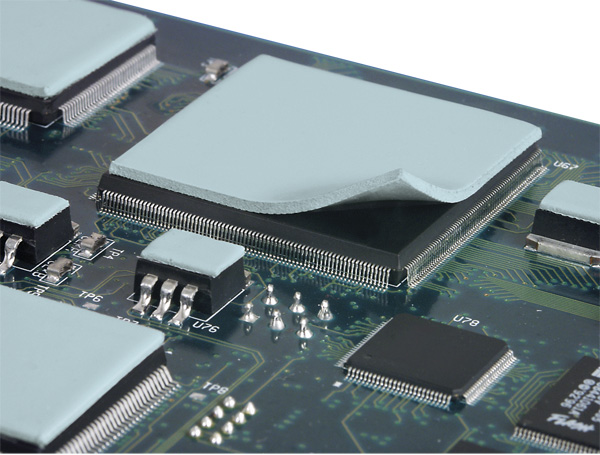Advantages of Industrial Fanless Embedded Computers
Overview
Industrial applications require a demand for systems that can operate efficiently in unpredictable settings and harsh environments. Most of the times, certain settings can take a real toll on computers whether it is due to dusty air, debris, heat damage and even a shortage of proper maintenance; this can potentially damage conventional computers from performing well in the industry. New technological advances are designed to fight the obstacles like overheating, and dust build up that these harsh environments will bring. This requires improvements for regular working computers and they include a removal of all moving components and the fans of the systems. By doing this, these fanless computers will deliver noise-free applications, excellent thermal controls, dust immunity, and energy efficiency.
How Conventional Computers Work
Before we explore the many advantages of fanless embedded computers, let's take a look at how fanned computers work. One of the greatest dangers that can jeopardize a computer system is heat. Industrial applications are generally in a great deal of demand and therefore require a lot more energy. But when energy is lost, it is transformed to heat. This heat can not only be very damaging but can decrease the overall performance of a system, so in order to combat this problem; fans are installed to remove the heat from the computers. However, these fans come at a price. Computer fan’s only role is to repel heat from a system, but they invite an entrance for dust and harmful particles that will lead to machine failure. Taking out these fans will require a system that can expel heat more efficiently than regular computers.
Farewell to Moving Parts
Whether industrial applications require movement of computers or when environments creates harsh debris and dust traditional computers will usually lead itself to machine failure. Moving parts like a fan attracts dust and particles and more than likely to fail at its applications. The benefits of fanless systems eliminate the risks of being in harsh environments. They can withstand the random vibrations, shock and particles that can damage a system from the inside making it a more reliable and efficient way for industrial operations.
Exploring the Components of Industrial Fanless Embedded Computers
Now that we know fans are out of the picture for productive industrial applications, its time to bring in the advanced technologies of fanless computers. Cooling without fans is a little more complicated, however, it is absolutely reliable. Systems that do not use a fan for a cooling system have an electronic device called a heatsink. There are two types of heatsinks, active and passive. Active heatsinks consist of a fan that repels heat away from the CPU chip beneath it. However, for more reliable ways of repelling heat, fanless passive heat sinks are a preferred option. CPU’s or Central Processing Units are known as the brain of the computer. These CPUs can usually generate a lot of heat and become severely damaged without a cooling system. The passive heatsink is designed to lie on top of the CPU, initiating a passageway for the heat to transfer through the fins on top of the CPU and removed. Although passive heatsinks are larger than active heatsinks, it is a lot more beneficial and advanced at cooling the system. If the fan of the active heatsinks somehow fails in a way and overheats, the CPU can become damaged. Furthermore, a completely fanless system allows the computer for noise-free operations.
Below is a diagram showing the dissipation of heat through a passive heatsink:

Composition of Heatsinks
There are two elements that contribute to the thermal conductive efficiency of the heatsink. The first is aluminum because of its excellent thermal conductivity and its lightweight in nature. The next element is copper. Although it is much heavier than aluminum, copper is way more efficient at thermal conductivity compared to aluminum because it allows its electrons to maneuver freely. Passive heatsinks may include these elements separately or together.
Thermal Conductivity

Because the enclosure of the heatsink or CPU is never perfectly flat, there will be gaps between them when you place the CPU straight on the heatsink. As a result, this will produce detrimental effects on the process of heat transfer. This is where the technology and the role of thermal compounds come into performance.
Thermal compounds are a solution that is gooey and sticky in nature that regulates the thermal conductivity between the gaps of the CPU and heatsink. Aside from the gooey solution, there is an alternate thermal compound called the ‘thermal pad’. Thermal pads are designed to replace a sticky solution and are a more convenient and popular choice for thermal conductivity and long term productions.
Industrial computers play a viable role in the industrial environment. This article explored the many benefits of fanless computers including how it combats problems of overheating through active and passive heatsinks with the aid of thermal pads, dust, and damaging particles and how fans usually set its self up for failure in the long run. Conventional computers are acceptable for everyday private use, but for industrial and demanding applications and wide-ranging environmental temperatures, fanless technology avoids overheating and delivers efficiency and reliability. Fanless systems are smaller and more compact. Because they are fully enclosed, these systems have the ability to operate quietly and dust-free indoors and outdoors. Flexibility equals productivity.




